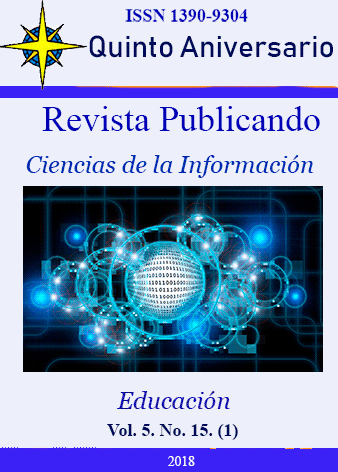Resumen
Investigating the role of early maladaptive schemas on external control source as a component of factors associated with personality traits that manifest itself in all areas of life and social relationships of individuals can provide a clearer understanding of potential and important changes. Therefore, the purpose of this paper is to examine the contribution of obedience schemas, self-sacrifice and seeking acceptance to explain the changes of external control source. The statistical population of the research consisted of all referring to the Qom Counseling Center of the meaning of life in 2016-17. Based on the Morgan table, 110 people were selected using available sampling and were responded to Incompatible Schema Questionnaire of Yang (2001) and Rutter's External Control Source (1966). The factual and content validity of the questionnaires was confirmed by expert opinion. Cronbach's alpha coefficient of the research variables was obtained higher than 0.7, which indicated the internal coordination of the items and confirmation of the reliability of the questionnaires. Multiple regression analysis using SPSS software was used for data analysis. Findings showed that only obedience schema had a positive and significant relationship with external control source. In such a way that for each unit increase in the obedience score of the external control source score increases to 0.311 on the basis of the standardized beta coefficient, and this increase is significant. In the case of self-sacrifice and seeking acceptance schemas, the significant level was higher than 0.05%. Therefore, the relationship with the external control source was not significant.
Referencias
Keshtkar M. M., (2017). Energy, exergy analysis and optimization by a genetic algorithm of a system based on a solar absorption chiller with a cylindrical PCM and nano-fluid, Int. Journal of Heat and Technology, 35 (2), 416-420.
Besharat, Mohammad Ali, Abdol Manafi, Atefeh, Farahani, Hojatollah; Khodaei, Mohammad Reza (2011). Moderator role of control source in the relationship between anger and depression in patients with major depressive disorder, contemporary psychology, 6 (2), 15-25.
Ramezani, Seyedeh Gol Afrooz (2010). Study of the relationship between the control of students with their tendency towards various types of teacher discipline. Master's Thesis, Educational Management, Sistan and Baluchestan University.
Keshtkar (2018). Numerical analysis of transcritical carbon dioxide compression cycle: a case study, 7 (1), 1-6.
Abbasiyan, Hamid Reza and Fatehizadeh, Maryam (2003). Standardization of a Short Form of Cognitive Schema Test on Students at Isfahan University. Thesis. University of Esfahan.
Fatti, Ladan, Mobati, Fereshteh; Dobson, Kite; Molody, Reza; Ziaie, Kaveh (2009). Functional structure of the Iranian version of Young Schema 232 forms in a non-clinical sample. Journal of Psychology, Tabriz University, 4 (16), 229-248.
Keshtkar M. M.; Dadkhoda Zadeh M. (2018). Thermal Simulation of the Symmetric and Asymmetric Arrangement of Barriers on Heat Transfer Enhancement in a Porous Gas Heat Exchanger, Journal of Thermal Science and Engineering Applications, 10 (1), 120-135.
Akbarikia, Hamid Reza., Gasparyan, Khachatur. (2012). The relationship between the scheme and the locus of control with obsessive compulsive symptoms. International Journal of Collaborative Research on Internal Medicine & Public Health, 4 (1). 24-32.
Calvete, E., Orue, I., & Hankin, B. L. (2014). A longitudinal test of the vulnerability-stress model with early maladaptive schemes for depressive and social anxiety symptoms in adolescents. Journal of Psychopathology and Behavioral Assessment, 1-15.
Calvete, E., Orue, I., Hankin, B.L. (2013). Early Maladaptive Schemas and Social Anxiety in Adolescents: The Mediating Role of Anxious Automatic Thoughts, Journal of Anxiety Disorders, 26, 278-288.
Chorpit, B.F. & amp; Barlow, D.H. (1998). The development of anxiety: The role of control in the early environment. Psychological Bulletin, 124, 3-21.
Gonzalez, D.Z., Calvete, Z.E., Orue, I.S. (2012). Early Maladaptative Schemas and Social Anxiety: The Moderating Effect of Avoidant Vs. over Compensation Coping, European Psychiatry, 27, 1, Guilford Press.
Gros, DF, Simms, L. J., Antony, M. M., & McCabe, R. E. (2012). Development and Psychometric Evaluation of Multidimensional Assessment of Social Anxiety (MASA). Journal of Clinical Psychology, 68 (4), 432-447
Mairet, K., Boag, S. & Warburton, W. (2014). How important is temperament The relationship between coping styles, early maladaptive schemes, and social anxiety. International Journal of Psychology and Psychological Therapy, 14 (2), 171-190.
Pinto-Gouveia, J., Castilho, P., Galhardo, A., & Cunha, M. (2006). Early maladaptive schemes and social phobia. Cognitive Therapy and Research, 30 (5), 571-584.
Keshtkar M. M., Talebizadeh, P., (2018). Investigation of transient conduction–radiation heat transfer in a square cavity using combination of LBM and FVM, Sadhana, 43 (4), 145-155.
Roelofs, J., Onckels, L., & Muris, P. (2013). Attachment quality and psychopathological symptoms in the clinically referred adolescents: the mediating role of the early maladaptive scheme. Journal of Child and Family Studies, 22 (3), 377-385.
Rosenberg, A., Ledley, D. R., & Heimberg, R. G. (2010). Social anxiety disorder. Cognitive-behavior therapy for refractory cases: Turning failure into success, 65-88.
Young, J., Klosko, J., & Weishaar, M.E. (2003). Schema therapy: A practitioner's guide. New York: The Guilford Press.
Young, J.E. (1999). Cognitive Therapy for Personality Disorders: A Schema-Focused Approach (3rd ed). Professional Resource Press.
Usted es libre de:
Compartir — copiar y redistribuir el material en cualquier medio o formato
Adaptar — remezclar, transformar y construir a partir del material
La licenciante no puede revocar estas libertades en tanto usted siga los términos de la licencia
Bajo los siguientes términos:
Atribución — Usted debe dar crédito de manera adecuada, brindar un enlace a la licencia, e indicar si se han realizado cambios. Puede hacerlo en cualquier forma razonable, pero no de forma tal que sugiera que usted o su uso tienen el apoyo de la licenciante.
NoComercial — Usted no puede hacer uso del material con propósitos comerciales.
CompartirIgual — Si remezcla, transforma o crea a partir del material, debe distribuir su contribución bajo la lamisma licencia del original.
